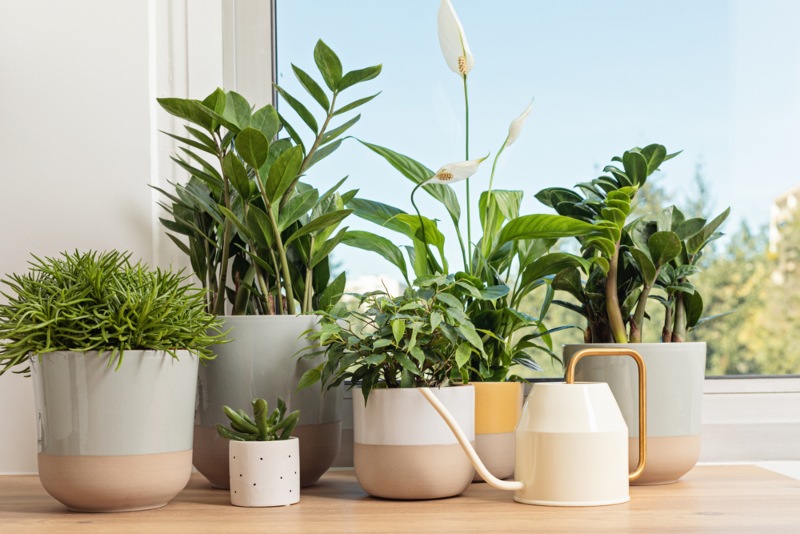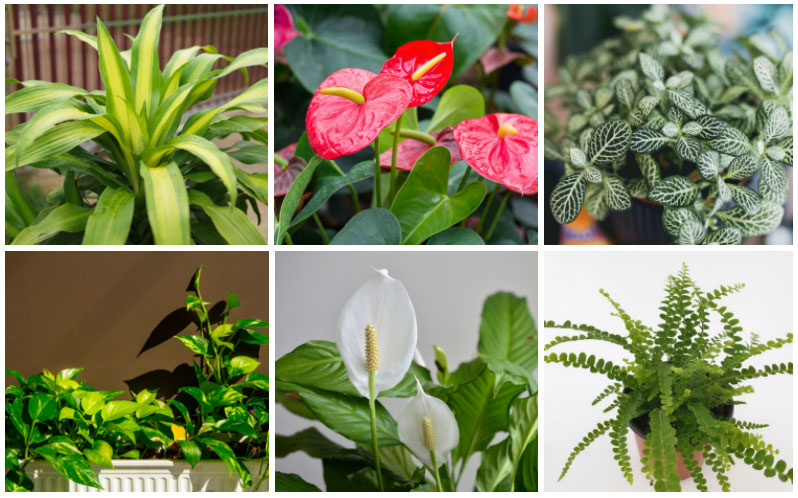Houseplants can help transform the dreary corners of your home or office into something cheerful and bright. Maybe you’re giving your plants lots of attention but are still having issues with plant health and appearance.

One problem you may notice is black spots on your houseplant leaves. Knowing the causes of these spots and potential solutions will help you keep your plants black-spot-free.
You’re Overwatering the Plant
Overwatering is the most common killer of houseplants today. The appearance of black spots may be the plant’s last call for help.
Damage from overwatering your plant will begin with the roots and then move upward. If the leaves are impacted, your plant is close to dying, and you need to act fast.
To check and see if this is the cause, unpot the plant and look at the roots. If they are brown, black, and mushy or have a bad smell, it means your plant is overwatered and needs help.
You can cut off the damaged roots and change out the soil in the pot. Make sure the issue doesn’t occur again by choosing well-draining soil.

The Plant’s Age
Sometimes, black spots aren’t caused by anything. Instead, they are just a symptom of old, worn-out leaves. Natural deterioration occurs as a plant eliminates older leaves and sends the nutrients to other plant parts that are still growing.
If age is the cause of the black spots, they should be exclusive to the bottom leaves. Also, the natural decline doesn’t necessarily affect multiple leaves at the same time. You can slow down this process if you provide superior care for the plant, such as cleaning the leaves and rotating them in the sun.
Fungal Infection
If your plant has a fungal infection, black spots will appear. Each plant is susceptible to different types of fungal infections. While this is true, they are usually all classified as “Leaf Spot” when they occur. Also, the treatment for fungal infections is the same, no matter what type of fungus it is.
Fungal pathogens thrive in wet conditions. They spread easily due to splashes and drips, which is the key to solving the issue. The fungal spores will stay dormant until they are activated by water (and the spores can remain inactive for a while). If a fungal infection is present, it means the plant is probably too moist or that the water has stayed on the leaves too long.
It’s up to you to keep the plant drier and ensure the leaves don’t remain wet. This will help prevent and treat the black spots on the leaves.
Some tips that can help with this include:
- Water the plant at the base, not the top.
- Water it earlier in the day.
- Ensure plenty of ventilation in the area.
- Don’t mist the leaves.
You also need to remove the affected leaves to ensure the fungus doesn’t continue to spread. Once corrected, the fungus won’t cause any permanent damage to your plant.

Viral and Bacterial Infections
Sometimes, black spots can be a symptom of a viral or bacterial disease. If this type of issue infects plants, it will be stressed, and the outcome isn’t always as good as it is with fungal infections.
If you believe this is the cause of the black spots on your plant’s leaves, you should remove all that are affected. Some other tips for managing a viral or bacterial disease include sanitation and prevention.
You can do the following to help:
- Keep plants that aren’t diseased away from those that are.
- Sterilize any tools in between uses.
- Give your plant extra attention and care.
Pests
A pest infestation may also cause black spots on your plant’s leaves. Some of the most common offenders include mealybugs, scale, spider mites, and aphids.
The pests will vacate your plant if you hose them off and then use an eco-friendly pesticide like horticultural oil or insecticidal soap.
Getting Rid of Black Spots on Your Houseplant’s Leaves
As you can see, several issues may lead to black spots on your houseplant’s leaves. Be sure to figure out the problem so that you can administer the right type of treatment to get rid of them and restore your plant’s health.






